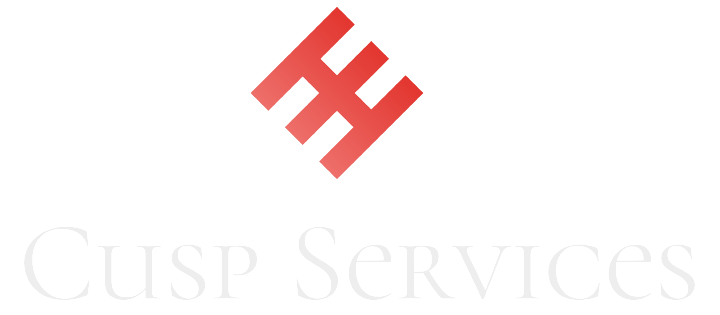
Why does it have to be so complex?
Product innovation might help startups redefine the market, but it is not enough for their sustainable growth. Thriving markets and volatile business landscapes are making innovation advantages decreasingly sustainable for organizations.
To sustain the growth of their ventures, Founders and Entrepreneurs, as the leaders of the organization, are challenged by internal and external stakeholders to create complex and multiple plan documents such as: Strategic Business plans, Marketing strategy document, GTM plans with execution details and more.
Is there a simple & an effective framework that combines all the essential elements that leaders of a growing organization could refer to and execute the plans to drive revenue growth, profitably?
In this series of articles, we talk about “SPANDA”, a unique and comprehensive framework that offers an innovative step-by-step approach to drive your revenue growth, create sales excellence and scale your startup holistically. “Spanda” is a Sanskrit word meaning “divine vibration” or “repeating pulse”. It describes how the human consciousness, at the subtlest level, moves in waves of contraction and expansion.

The SPANDA framework, from CUSP, acts as the heartbeat of our approach to holistic and infinite organizational growth, and it stands for: Segment->Prepare->Attract->Nurture->Delight->Ascend.
And the first article in this series talks about Market segmentation and why it is critical for an effective GTM strategy.
Understanding Market Segmentation and Its Different Types
Segmentation refers to creating groups of your customers having the same interests, behavior, requirements, or pain points. Through this, you can easily narrow down and focus on specific segments of your audience that are most profitable for your organization.

There are four major types of segmentation:
- Geographic Segmentation
Segmentations based on cities, regions, countries, specific climate areas, population density, and urbanicity fall into this category. Geographical segmentation can allow you to understand the different locations for your operations and set up the logistics.
You can also get valuable insight into the different languages and cultures the people come from; to help you better personalize your offerings, enhance customer experience, and build trust and brand credibility.
- Demographic Segmentation
This is one of the most common ways of segmenting the audience. It is done based on gender, age, phase of life, occupation, income, and educational qualifications, to name a few.
- Product Usage (Behavioral)
As the name suggests, this segmentation tells you how many customers use your product offerings and the different ways in which they do so. With this kind of segmentation, you will be able to determine how loyal an audience base you have. They can be:
- Super users: they are the most loyal customer base, use the solution frequently and rely on it, and won’t easily change the providers.
- Frequent users: they need the solution but are not as deeply reliant on it.
- Followers: they wait for the solutions to be used widely by others and the new features to become popular before using them themselves.
- Occasional users: they do not use the solution that often and will easily change the vendors.
- Early adopters: they test the new products and features early on and include them in their daily usage.
- Churned: they have stopped using the solution.
By tracking the product usage of your customers, you can further improve your product development through valuable insights into what features the audience likes and gaps where the solutions need improvements.
- Psychographic Segmentation
This segmentation is more inclined toward the different behaviors and values of the audience. This is determined by their goals, personalities, beliefs, lifestyles, cultures, what they value, etc. Doing this can help you understand what drives your customers to purchase and the similarities/differences between their values and yours.
After you analyze the audience and segment them, ask yourself the following questions:
- What is the average number of customers in the segments?
- Were all the potential customers from the target market included before segmenting?
- Are the segments big enough to be catered to and profitable?
- What are the similarities (if any) among the segments? /How different are the segments?
- Do you have enough resources (capital, workforce, etc.) To start working on those segments and communicate with them?
How Will This Help Your Business?
It is obvious now that by focusing your marketing campaigns on specific customer desires, purchasing preferences, demographics, and places, you can provide them with better value while delivering a more personalized experience.
In a survey, it was found that over 80% of audiences prefer doing business with brands that personalize their experience. Furthermore, with segmentation, businesses are 60% more likely to determine their customers’ pain points and concerns and 130% more likely to understand their intentions.

Besides that, segmentation encourages targeted marketing that helps relevant audiences find your business faster and generate quality leads. Email and SMS marketing for a segmented audience can significantly increase the overall ROI for any given campaign.
If done well, segmentation can increase your customers’ lifetime value through referrals and repeat business.
Designing your products based on the audiences’ needs makes them feel valued, trusted, and well-served, increases brand loyalty; and improves your brand’s reputation. It will also help you market your products only to the segments that are likely to be interested in your offerings rather than advertising them to the entire market and losing a lot of money only to end up with a small conversion percentage.
Furthermore, knowing your audience’s budget will keep you from underselling or overselling yourself and enable you to adjust the prices accordingly for more profits.
Leveraging Segmentation with the Right Sales Consulting In India
Initially, you might find various small and big segments in your audience and try to cater to all of them. But this is not practical because neither do you have endless resource supply (time, capital, and workforce) to cover everything nor will all the segments necessarily be profitable.
Large segments might be ideal for reaching a vast audience base while potentially drawing in more revenue. But audiences in larger groups tend to have more varied needs. And constantly having to test the offerings to find the right market fit can become quite expensive. Whereas excessively small segments won’t be profitable.
To successfully implement market segmentation and leverage its wide-ranging benefits, you need experienced sales consulting for startups in India. We at CUSP help you effectively define and conduct quantitative research on your target audience to derive clear insights on how you can identify and cater to the most profitable segments. The process begins by asking the following questions-
- What pain points do you seek to solve?
- Who do you solve it for?
- What is your target niche?
- What is your value promise to your customers?
- What makes your offering different from your competitors? Or why should the customer buy your products over other providers in the market?
- What is your business model?
- How would the customer succeed by using your services or solutions?
- What is the ROI (Return on Investment) for your customer?
Based on this, we create relevant segments and define the users’ segment-specific demography, persona, product usage, lifestyle, needs, interests, challenges, etc. We can further check the segments’ profitability by seeing how much investment is needed and what returns can be expected.

Now that you have created relevant segments, you need to identify your unique value proposition and create positioning strategies based on your users’ needs and quality expectations. Then for each segment, you must choose a few beta customers to test your offers with and evaluate your product-market fit. This will help you determine the customers that will derive the most value from your offerings, which will, in turn, help you drive your revenue and business growth.
Find out more about defining your value proposition, goals, and more in the next article in our series ‘SPANDA Framework’ and learn how you can effectively lay the fundamental building blocks of a winning organization. Get in touch with the best sales consulting in India to know more about the right approach to effective revenue generation and holistic business growth.


